
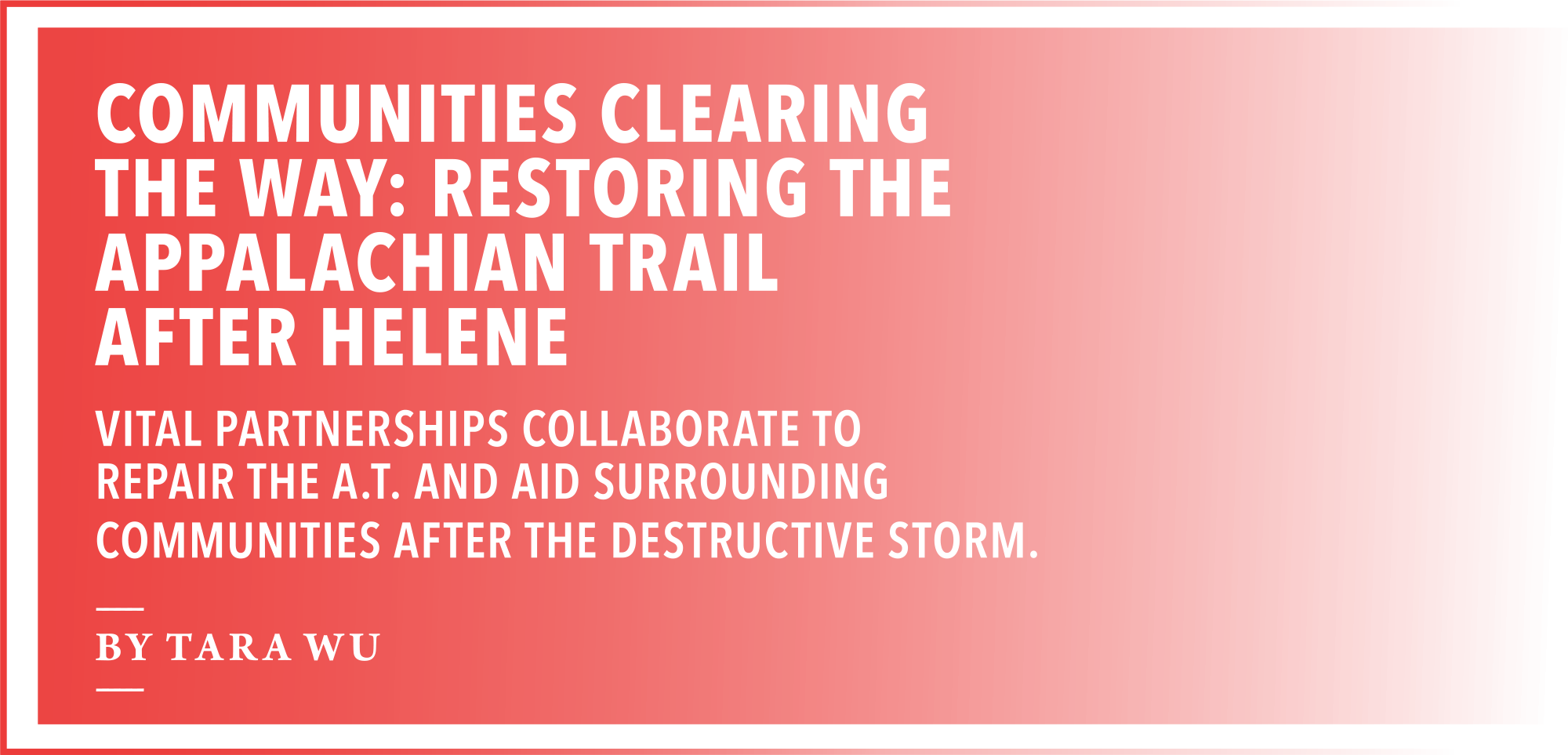

Paul Curtin, A.T. Supervisor for Carolina Mountain Club (CMC), became a volunteer powerhouse, cleaning out Swannanoa and Marshall, towns buried in mud. He and CMC members also removed trees from yards in Black Mountain. “My wife calls me a full-time volunteer,” said John Beaudet of CMC and Tennessee Eastman Hiking & Canoeing Club (TEHCC). Beaudet set to work clearing roads of landslide debris so communities could access supplies.
Accounting for family, friends, and colleagues was paramount. Jim Baum, a Virginia Ridgerunner, recounted connecting with his colleagues in an employee text group. “As we were communicating next steps for the Trail, two ATC folks were missing from our team.” (Both were later accounted for, once they regained access to cell phone and internet services.)
The Forest Service (USFS) immediately started clearing roads, freeing residents. “The U.S. Forest Service was on a life and limb rescue mission,” explained Franklin Tate, ATC Associate Regional Director, referring to staff from both Pisgah and George Washington-Jefferson (GWJ) National Forests.
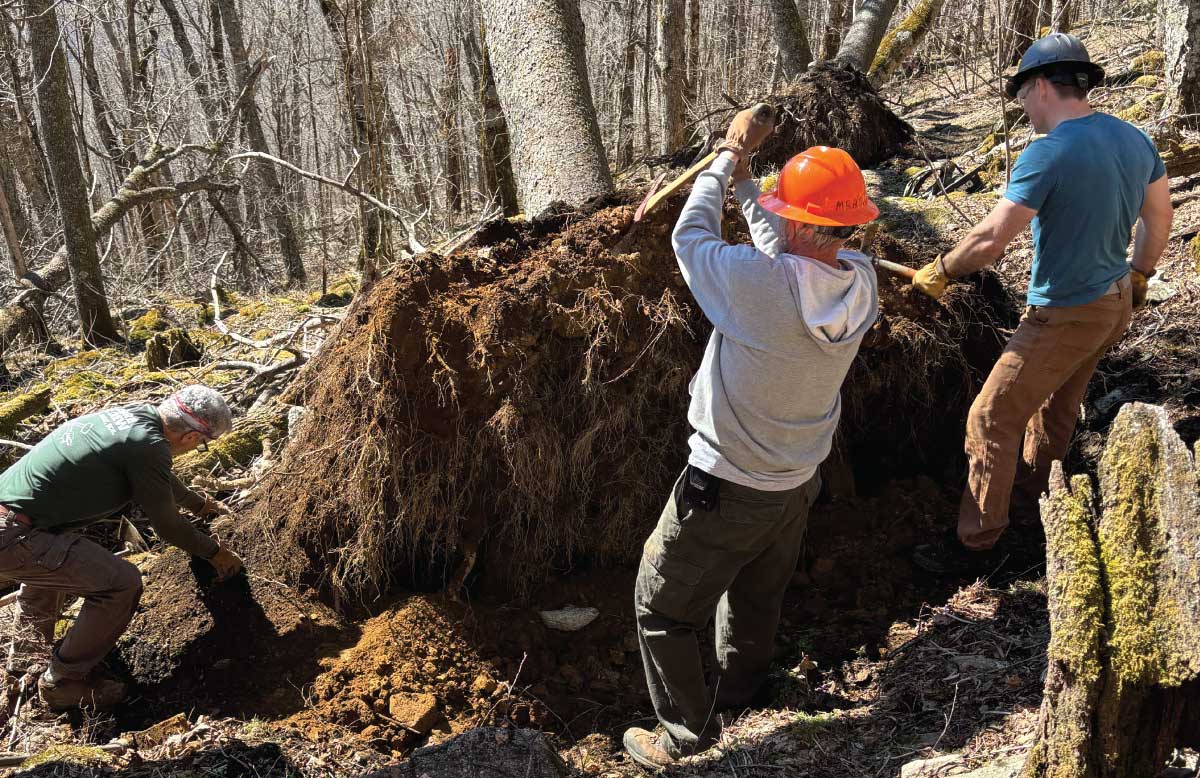
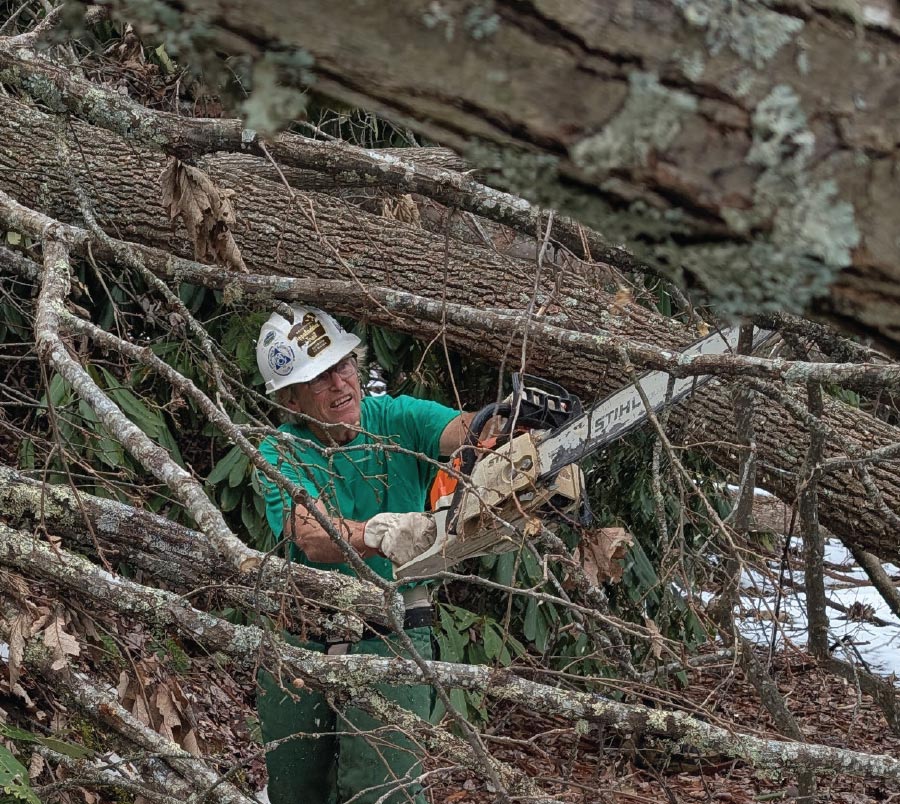
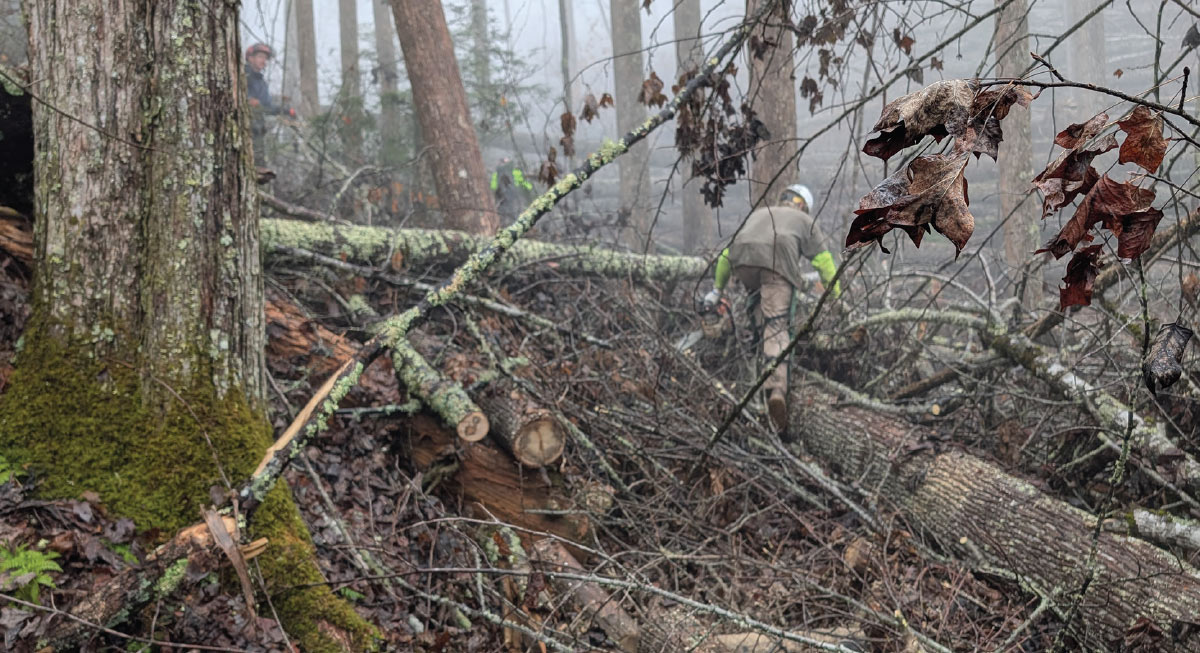
The ATC also created the Appalachian Trail Resiliency Fund (ATRF) to aid A.T. communities, repair damaged Trail infrastructure, and restore the surrounding landscape. The ATRF launched in October, and generous individual donors, members of the Board of Directors, partner organizations, and corporations provided much-needed funding.
“It was remarkable what the ATC did with the Resiliency Fund to assemble crucial resources,” said Baum. Through the ATRF, his season was extended. “We needed to get a set of eyes on closed trail,” remarked Doug Levin, Trails Supervisor for Mt. Rogers Appalachian Trail Club (MRATC). “Jim’s familiar with the Trail. In case of danger, he knows how to get himself out.” Baum was provided mentorship by the U.S. Forest Service. “Jake Smith and Ed Wright [USFS staff] were focused on getting campground hosts to safety,” Baum explained. “Rather than working out of his office, Ed’s office became the hood of a pickup truck. It makes you work harder when you get somebody like that.”
Disaster response teams from three National Forests — GWJ, Cherokee, and Pisgah — also conducted assessments. National Park Service A.T. office (APPA) staff served on Incident Management Teams, triaged damages, and secured funds. Forest Service employees, such as Brandon Church, hiked the A.T. from Davenport Gap to Damascus. Others scouted specific Ranger Districts.
When the Piedmont AT Hikers (PATH) returned to Trail days after the storm, they found “the worst damage to the Trail anyone could imagine,” according to David Atkinson, the club president. Saw teams toiled for weeks, ensuring passage. Further south, the MRATC was itching to return. “I was advocating to get us out and assess amid closures,” recalled Levin.
“It was a fluid situation, and communication was key,” remarked Kathryn Herndon-Powell, ATC Central Virginia Regional Manager and interim Senior Regional Director. “What skills and supplies are needed, who’s available, and who can work in which areas? Can we be a liaison between overly stretched agency personnel and eager people? How can we plan opportunities to clear and repair the Trail?”
“We focused on southernmost Virginia, as resources weren’t there. Other clubs had lots of active members and certified sawyers,” shared Jerry Kyle, ATC’s High Country Regional Manager. The 28-mile section from Elk Garden to the Virginia -Tennessee border also quickly emerged as the most heavily impacted miles in Virginia, with 90 percent of the trees on the ground in some areas. According to Baum, he “thought it would take three years to cut all the blowdowns.”
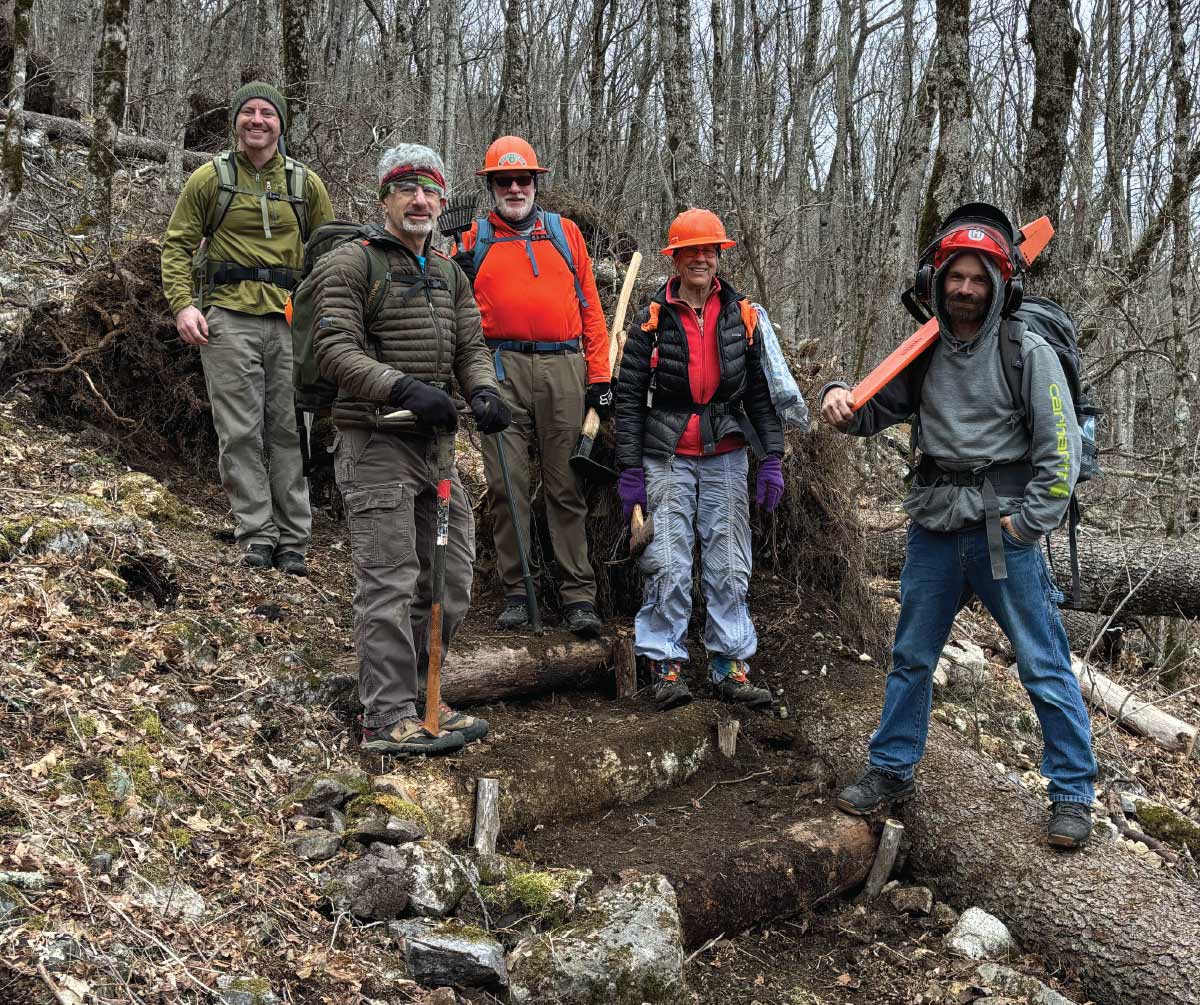

The northern half of MRATC’s section reopened in late October, and the club sprang into action. To assist, the ATC coordinated two multiple-day events near Marion and Damascus, sending certified volunteer sawyers recruited from other A.T. clubs into the hardest hit areas. Despite significant weather challenges, participants came from near and far. “It was like herding cats,” laughed Levin. “They immediately wanted to work. They’ve traveled here, they have the gear. It was inspiring.” The ATC coordinated volunteer accommodations with hostels and restaurants, which helped to support impacted economies.
Thanks to the all-hands-on-deck approach of combining professional saw crews and volunteer efforts, supported by the swift generosity of donors to the A.T. Resiliency Fund, the entire A.T. through Virginia was open to hikers on December 13.
One of the biggest volunteer events was in Hot Springs, North Carolina, with 105 volunteers including District Ranger Jennifer Barnhart and Natalia Muglia from Pisgah’s Appalachian Ranger District. Upon residents’ request, one group removed trash stuck in trees and along the banks of the French Broad River.

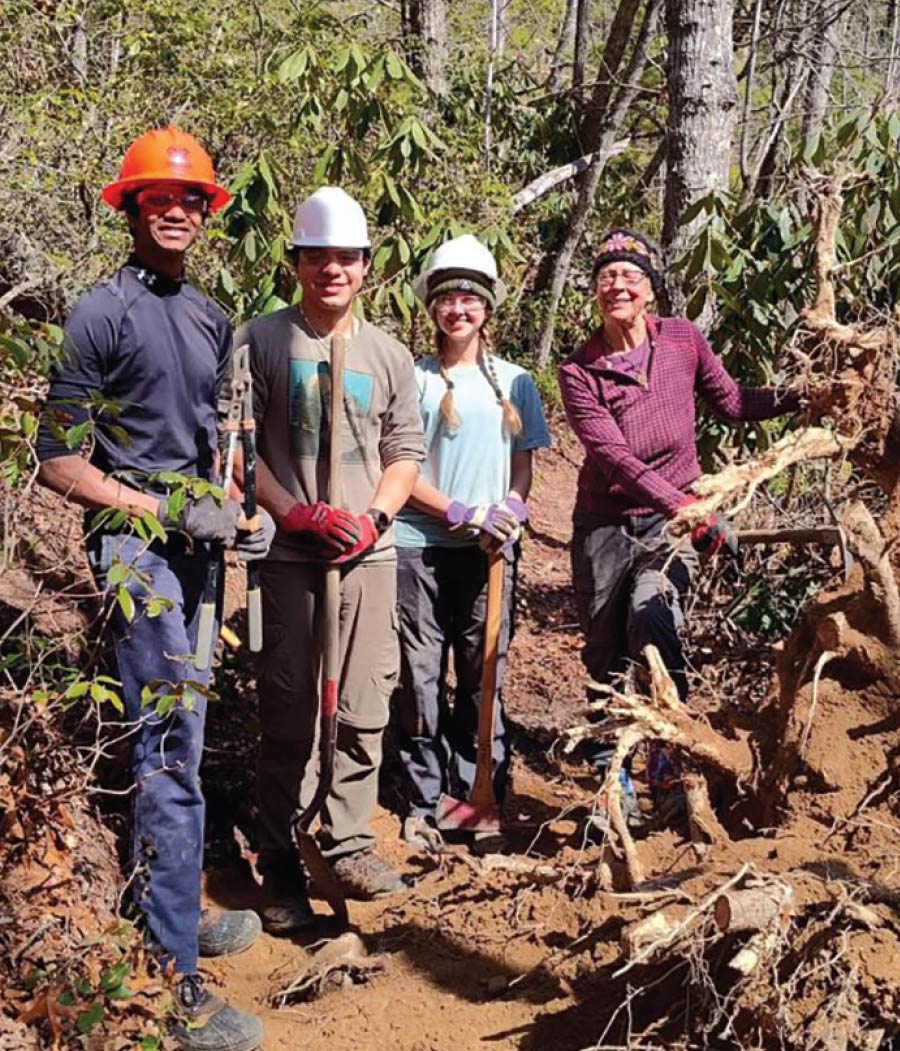
Before the storm, the Elk River bordered a field which the A.T. traverses. During Helene, the river rose 16 feet, filling the entire valley. “We ran into an 8-foot-high debris field consisting of door frames, trees, pieces of houses, root balls. It’s not normal A.T. material. We resorted to sawzalls,” Fritz explained, referring to saws often used for demolition and rescue work. TEHCC was able to cut a path through the debris, but the scenic view was gone. In its place, the community left makeshift shrines of propane tanks, children’s rocking horses, and wooden crosses.
“We’ve gotten most of it cleared now,” remarked Sawyer Coordinator Tony Messina. “The Forest Service has cleared quite a bit as well.” APPA (the National Park Service office that oversees the Trail) provided key assistance on USFS lands that would not have been available without the A.T.’s National Scenic Trail status and APPA’s administrative role.
Volunteer hours surged. By late January, CMC committed 3,500 hours of labor to the A.T. TEHCC boasted 4,700 hours and over a hundred events club wide. “It’s almost a full-time job in Virginia,” laughed Levin. “I know it’s temporary, so it’s okay. A bad day in the woods is still better than any day in the office.” Unbelievably, there were no injuries during any of the volunteer events.
Respect for all those who helped overflowed. The ATC was praised widely for critical leadership and communication. Crew leaders were recognized for tenacity and expertise. Scouts were heralded for providing vital insight. Contracted sawyers and other resources arrived as needed, thanks to the ATC, APPA, and USFS staff. Volunteers were revered for their service. As the Trail and surrounding communities continue to recover, the partnerships and collective efforts will continue to be key.
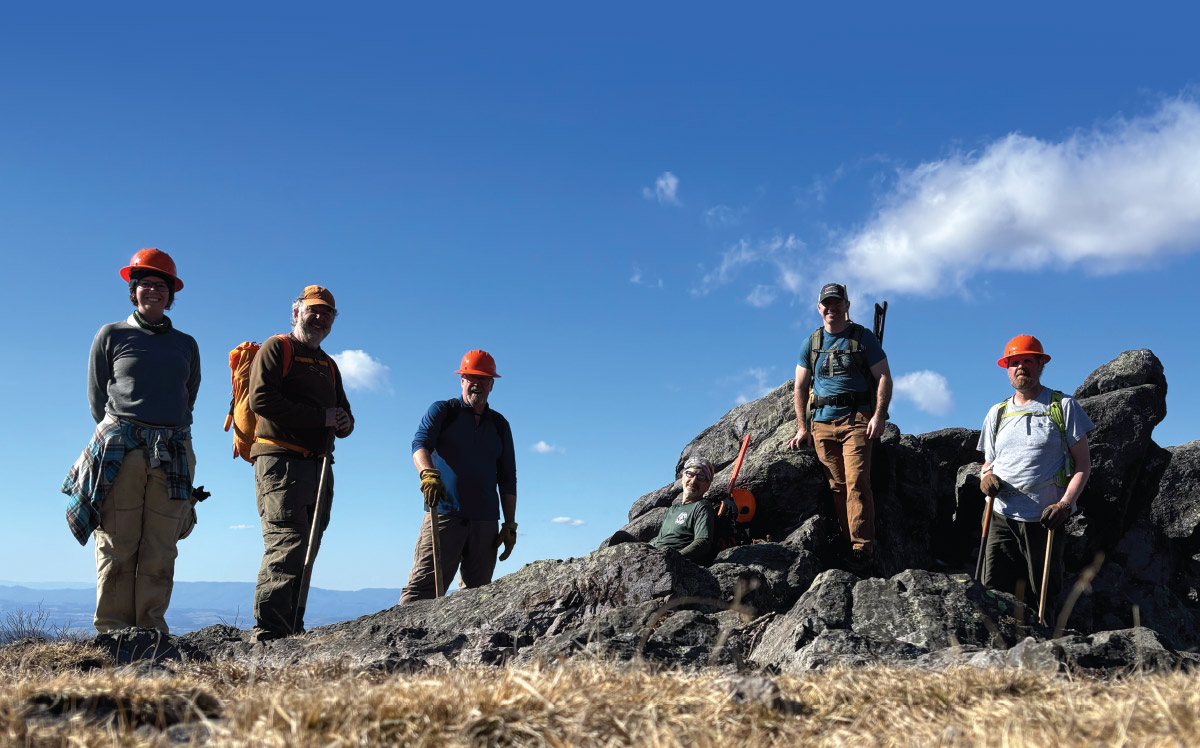
Flexibility will be key. While the Trail will be passable, “the experience will be different,” Curtin explains. “Views will be blocked. You may experience a claustrophobic feeling. You’re not going to be able to set up camp just anywhere.” Hot Springs will offer fewer services. Tennessee will be challenging with root balls and many closed shelters, but resupply will remain strong. “Bring plenty of sunscreen,” warns Fritz. Visitors should plan their hikes carefully and check for updates regarding closures or restoration work on the Trail. Wildfire risk is high, and weakened trees continue to fall, so backpackers should be especially cautious when selecting a campsite or choosing to have a campfire.
Lend a hand. As trailwork transitions to tread repair, filling root ball holes is crucial. Maintenance crews will continue to address these issues and volunteers are always welcome to join service projects on the Trail. Volunteers and visitors can also serve in impacted towns such as Asheville, Hot Springs, Marshall, Erwin, or Damascus.
Perhaps one of the greatest gifts visitors and supporters can offer the A.T. is perspective. “The forest is always in some stage of regeneration. It’ll take years for damage to heal,” explained Beaudet. “It’s always been a hodgepodge of old and young forest. It’ll come back.”
“Actually,” he reflected, “there’s going to be a lot of wildflowers come spring. The sunlight is going to hit places it hasn’t hit in really a long time.”
The Konnarock Trail Crew has added multiple weeks to their schedule for Helene-related tread repairs. For those details and other volunteering opportunities, visit appalachiantrail.org/volunteer